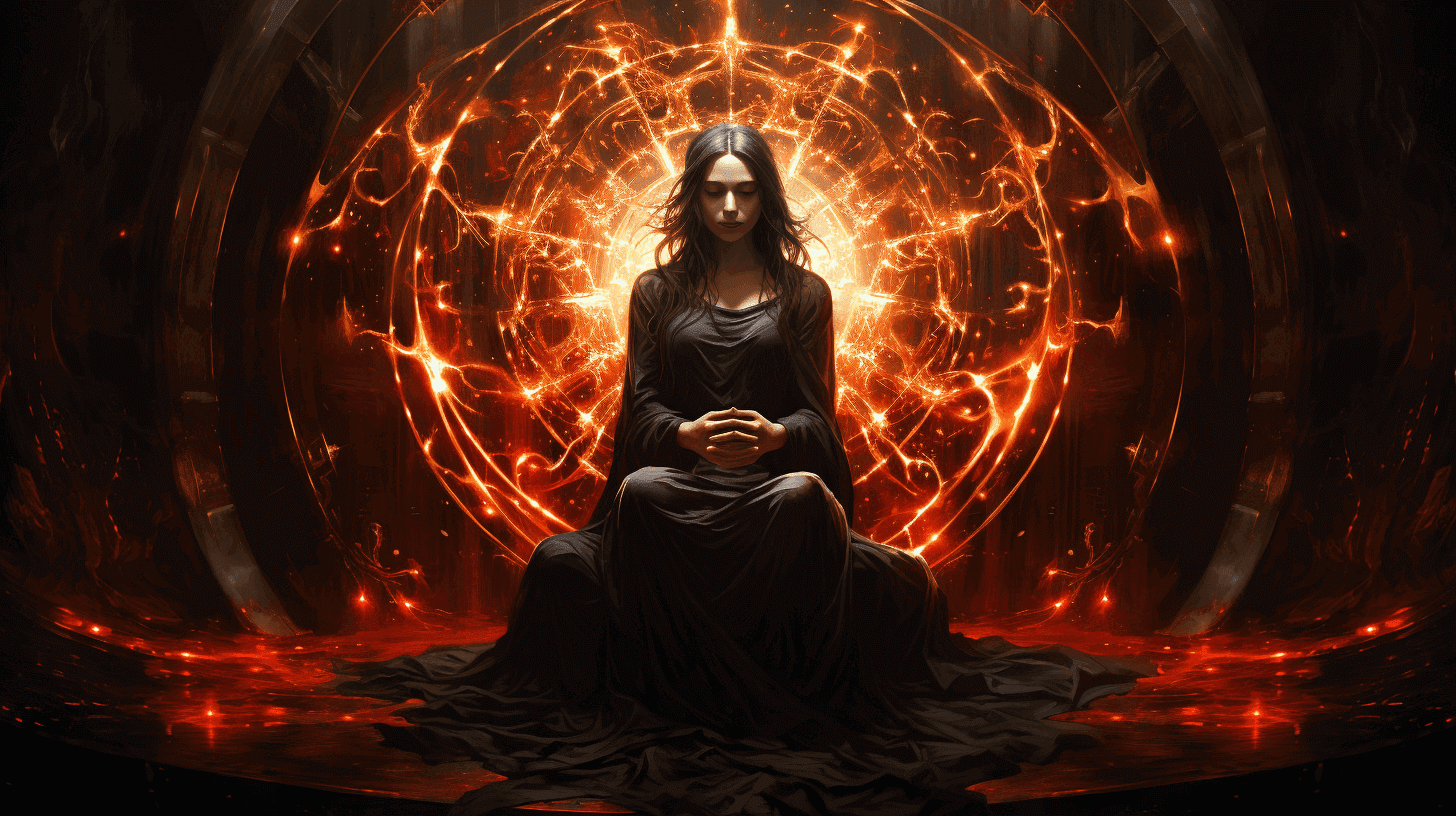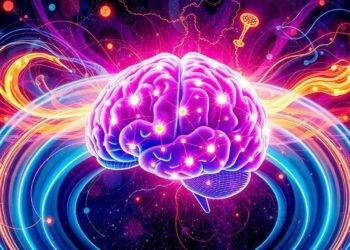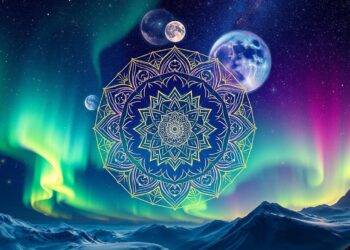Unveiling the Veil: The Definition of Mysticism and Spirituality
In the realm of human consciousness and perception, mysticism and spirituality function as both intriguing curiosities and profound areas of exploration. Mysticism is typically defined as the pursuit or experience of a direct, intimate union with the divine, often beyond intellectual comprehension.
The mystical experience tends to be characterized by senses of oneness, transcendence, ineffability and an intuitive knowledge that transcends empirical understanding.
Spirituality, while often conflated with religion or faith traditions, is better understood as an individual’s personal relationship to life’s existential questions regarding meaning, purpose and connection.
It encompasses a range of phenomena from practices such as prayer or meditation to experiences like awe or transcendence. Spirituality is essentially a broad term that encapsulates the various ways individuals find meaning outside themselves.
Through Time Immortal: Brief History and Origin of Mysticism and Spirituality
The roots of mysticism trace back to our earliest ancestors’ attempts to connect with something greater than themselves – an unseen force or energies governing existence itself.
Cave paintings found in regions like Lascaux in France depict shamanic rituals from nearly 20,000 years ago where men entered altered states to encounter spiritual realms.
Ancient Vedic texts from India depict mystics who meditated profoundly on life’s mysteries. Spirituality too has ancient origins.
Across cultures worldwide from indigenous tribes in Africa to ancient civilizations like Egypt or Greece – humans have sought meaning through rituals, ceremonies and philosophical contemplations about life’s intricate web.
These varied forms display spirituality’s pervasive presence across time periods pointing towards a universal human inclination for seeking meaning beyond physical existence.
The Sacred Within the Secular: Importance & Relevance In Today’s Society
In our rapidly evolving world characterized by scientific advancements yet burgeoning existential crises – mysticism offers an antidote for modern malaise.
It provides individuals a path towards inner transformation – fostering virtues such as compassion, humility & inner peace which are essential for harmonious societies.
Similarly, the relevance of spirituality in today’s society cannot be overstated. With increasing global challenges–be it socio-political conflicts, natural disasters, mental health crises– spirituality equip individuals with resilience. It encourages mindfulness, promotes interconnectedness & nurtures hope amidst adversity.
Spiritual practices such as meditation have been scientifically validated for their numerous benefits including stress relief, cognitive enhancement & overall wellbeing.
Furthermore, in our increasingly pluralistic societies, the inclusive nature of spirituality allows diverse communities coalesce around shared values promoting social cohesion.
In essence, mysticism and spirituality in their timeless wisdom provide a sane refuge in chaotic times offering individuals paths towards personal growth, social harmony & planetary healing.
Eastern Perspectives: Traversing the Mystical Landscape of the East
Hinduism: The Serpent Power of Kundalini Awakening
In the vast, intricate tapestry of Hindu mysticism, one concept stands prominently – the Kundalini awakening, often referred to as ‘The Serpent Power’. This ancient belief posits that a primal energy rests at the base of the spine, symbolically represented as a coiled serpent.
The purpose of spiritual practices like yoga and meditation is to arouse this dormant energy, guiding it through seven chakras or energy centers along the spine until it reaches the crown chakra.
This process is believed to catalyze an intense transformative experience leading to higher states of consciousness. The journey through these chakras isn’t merely physiological but also psychological.
Each chakra corresponds to different aspects like survival instincts (root chakra) or communication abilities (throat chakra). As such, Kundalini awakening involves holistic self-improvement and enlightenment.
Buddhism: Zen and The Art of Mindfulness
As an incarnate jewel in Buddhism’s rich spiritual tradition, Zen emphasizes ‘mindfulness’: attentiveness to present-moment experience without cognitive filters or emotional coloring. This non-judgmental awareness redirects focus from ego-centric thoughts towards raw sensory data, grounding individuals in reality and inducing tranquillity.
Zen mindfulness transcends meditative sits; it permeates every action – from sipping tea passionately named ‘Zen tea ceremony’, bolstering presence in ordinary tasks. Such practice cultivates equanimity amid life’s tumultuous waves, revealing peace within chaos.
Taoism: Balancing Yin and Yang
The Taoist philosophy postulates that all facets of existence contain two opposing yet complementary forces – Yin (the passive female principle) and Yang (the active male principle).
These dual forces constantly interact with each other, maintaining a dynamic balance that forms life’s rhythm. To expound further on its metaphorical resonance; Yin embodies gentility & calmness while Yang depicts vitality & vigor.
Both are equally crucial for optimal functionality- Akin to a bird requiring both wings for flight or a bow needing both flexibility & rigidity for shooting arrows. Through harmonizing these energies within oneself via exercises like Tai Chi or Qigong, Taoists believe they can attain spiritual equilibrium and unity with nature’s flow- ‘the Tao’.
Western Perspectives: Unveiling Western Traditions’ Spiritual Essence
Christian Mysticism: Union with God – Unio Mystica
In Christian mysticism exists an intimate expression called ‘Unio Mystica,’ signifying union with God. Rooted in Neoplatonic thought which affirms humanity’s divine spark linked with God’s essence called soul; Christian mystics seek this primal connection through contemplative prayer & devotion augmented by grace.
This union denotes not identity absorption dissipating individuality but rather relational intimacy- Like two candles fusing into one flame yet sustaining distinct wicks. This state is characterized by ineffable joy transcending earthly pleasures due to its divine communion nature delivering profound peace beyond understanding.
Judaism: Tree Of Life Symbolism In Jewish Kabbalah
Jewish Kabbalah introduces an emblematic construct dubbed ‘Tree Of Life’, constituting ten spheres (Sefirot) interconnected by 22 paths mapping Creation’s dynamics.
Each Sefira encapsulates divine attributes manifesting God’s immanence into creation- From intellectual faculties (Wisdom/Understanding/Knowledge trio) governing rationality to emotive attributes like love or justice reining sentimentality.
This symbolic representation serves as Kabbalah study guide fostering enlightened living through balancing sefirotic expressions within oneself thereby aligning human conduct with cosmic order- thus restoring harmony amidst chaos induced by imbalances causing life adversities.
Sufism in Islam: The Whirling Dervishes
Among Islam’s mystical branches known as Sufism exists an iconic ritual – Sema – performed by whirling dervishes belonging primarily to Mevlevi Order founded by Rumi’s followers in 13th century Turkey after his passing away.
It involves participants whirling in remembrance Of Allah(God), expressing deep reverence & love towards Him. Their flowing white robes symbolize death shrouds, tall brown hats represent tombstones while their circular dance signifies planets revolving around sun alike believers’ lives around Divine Love.”
This physically demanding yet spiritually exhilarating performance symbolizes mystical journey towards truth realization: starting from earthly existence, traveling through various spiritual states finally culminating into unity with Divine; thereby returning back enriched facilitating others on their spiritual quest too. “
Practices in Mysticism and Spirituality
An Exploration of Meditative Techniques across Various Cultures
The art of meditation serves as the cornerstone of many mystical traditions, providing a conduit through which practitioners seek transcendence and spiritual awakening. In the realm of Hindu philosophy, Transcendental Meditation, taught by Maharishi Mahesh Yogi, forms a core practice.
This technique encourages the practitioner to sit comfortably with closed eyes and silently repeat a mantra – a sound or phrase with spiritual significance – to facilitate a state of relaxed awareness.
Vipassana, an ancient meditation technique from the Buddhist tradition, offers another method for spiritual exploration. Its essence lies in its relentless pursuit of self-transformation through self-observation.
Practitioners primarily focus on their breath or sensations within their body to foster deep personal introspection. The Japanese Zen tradition’s Zazen method instead cultivates mindfulness by sitting upright and attentively observing one’s thoughts without judgment.
Ceremonial Rituals & Sacred Objects: Gateways to the Divine
Rituals have been an integral part of spirituality since time immemorial. Shamanic journeying is one such ritual that has its roots in indigenous cultures worldwide and uses rhythmic drumming to induce altered states where practitioners believe they can interact with spirit realms.
Sweat lodges are another powerful ceremony often found in Native American cultures where participants enter a dome-like structure to experience intense heat from stones heated on fire outside. This ritual aims at purification and healing from any physical or emotional illness while fostering community bonding.
Spiritual Disciplines & Ascetic Practices: Pathways to Self-Realization
Spiritual disciplines across various traditions emphasize asceticism – voluntary abstinence from worldly pleasures – as gateways towards deeper spiritual experiences.
Fasting is widely practised across myriad religions – Christians during Lent; Muslims throughout Ramadan; Hindus on specific holy days; Buddhists following monastic codes – all serving as tangible demonstrations of faith while being believed to subdue physical impulses thus enabling heightened spiritual awareness.
Celibacy is another form self-denial prevalent particularly within Christian monastic orders and Hindu yogic traditions that sees sexual energy as potentially transmutable into higher forms of spiritual energy.
These diverse practices highlight an astonishing range between ascetic disciplines where austerity serves as the path towards spirituality versus more ecstatic rituals aiming at transcendence through sensory overload.
Mystical Experiences & States of Consciousness
Defining the Ineffable: The Lingering Awe of Mystical Experience
Within the ambit of spirituality and mysticism, a frequent term one encounters is the ‘mystical experience.’ These are profoundly transformative events that inspire awe, and often leave individuals with an ineffable sense of having touched something transcendent.
Common characteristics include a deep sense of interconnectedness, timelessness, profound joy or peace, and an overwhelming sense of sacredness.
The mystical experience often engenders a paradigm shift in consciousness, altering one’s worldview and perceptions significantly. Moreover, it’s worth noting that mystical experiences are not confined to religious context or spiritual practices alone.
They can occur spontaneously – during moments of introspection, interaction with nature, or even during periods of intense suffering or trauma. They can also be cultivated deliberately through meditative practices and prayer rituals across various spiritual traditions.
The Penumbra Between Life & Death: Near-Death Experiences (NDEs) & Out-of-Body Experiences (OBEs)
Beyond the realm of everyday reality lies territory less charted: Near-Death Experiences (NDEs) and Out-of-Body Experiences (OBEs). NDEs often include episodes where individuals approach clinical death but recover to narrate tales about moving through tunnels toward light sources; encountering deceased relatives; or experiencing peace.
OBEs involve sensations where one seems to view their physical body from an external position – a genuinely mystifying phenomenon. Though some postulate these experiences as hallucinations spurred by brain chemistry amidst duress; others see them as tantalizing glimpses into possible realities beyond our current understanding.
Rigorous research continues in this area with consciousness studies exploring different aspects such as life after death scenarios; reincarnation beliefs; astral projection etc., all contributing towards expanding our understanding about consciousness itself.
Divine Elixirs?
Altered States Through Psychedelics: Ayahuasca Ceremonies to LSD Psychedelics like Ayahuasca and LSD have long been utilized in certain cultures for inducing altered states leading to mystical experiences.
Ayahuasca ceremonies in South American shamanistic traditions employ brew made from Banisteriopsis caapi vine together with other herbs causing intense visionary state considered vital for healing and divine communion.
LSD was extensively researched upon mid 20th century for its potential therapeutic usage before it faced legal restrictions globally. However recent resurgence shows promising potential in treating conditions like depression, anxiety relating to terminal illness etc., due to its ability for provoking ‘mystical-type’ experiences similar as discussed before – united consciousness feeling; time distortions et al.
While these substances offer potent means for spiritual exploration they require supervision under experienced guides due space they open up is overwhelmingly powerful frequently leaving individuals unprepared about interpretation hence making integration challenging within their existing life frame.
The Intersection between Science & Spirituality: An Unlikely Connection
Ironically, in the contemporary world, science and spirituality, erstwhile antithetical domains, are increasingly seen to intersect and even complement each other.
Quantum physics, with its kaleidoscope of baffling theories like superposition and entanglement – which describe particles existing in multiple states simultaneously and being ‘connected’ irrespective of distance – bears uncanny resemblance to mystical teachings on the interconnectedness of all beings within a unified field of consciousness.
Moreover, neuroscience has begun delving into this crossroad by exploring meditative states.
Through imaging techniques such as fMRI scans, researchers have discovered that regular meditation can remodel neural pathways. These modifications aid in emotional regulation and stress resilience – reports confirming what spiritual practitioners have asserted for millennia.
Conclusion: Bridging Epochs through Mysticism & Spirituality
In an era fraught with technological overdrive yet underscored by existential angst, mysticism and spirituality bring forth a beacon of hope that lights up our collective human quest for meaning.
By tracing their origins to intertwining them with modern scientific insights, it’s evident that these perennial philosophies continue to be a repository of profound wisdom.
Acknowledging their shared essence across cultures encourages mutual respect and understanding in our diverse world.
Moreover, recognizing the scientific validation of certain practices provides credibility while encouraging further dialogue between these disparate disciplines. As we move forward into an uncertain future, the answers might lie in revisiting the wisdom enshrined within mysticism and spirituality – an optimistic prospect indeed.




























































